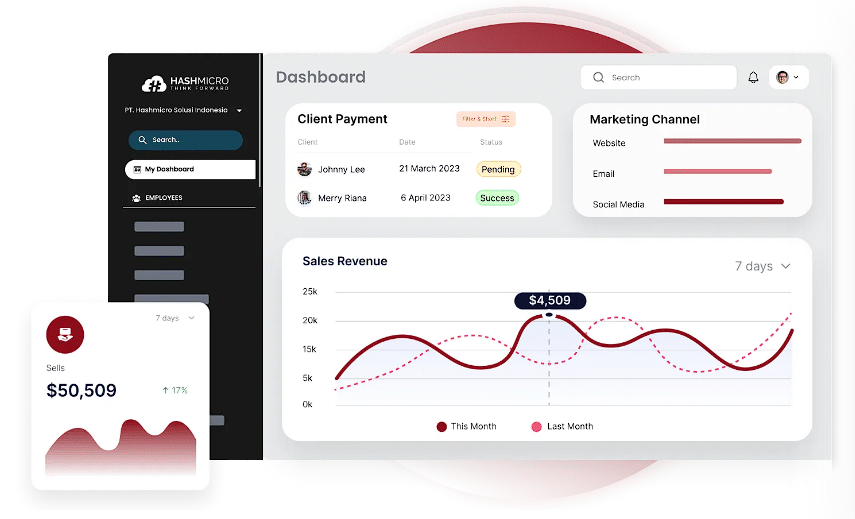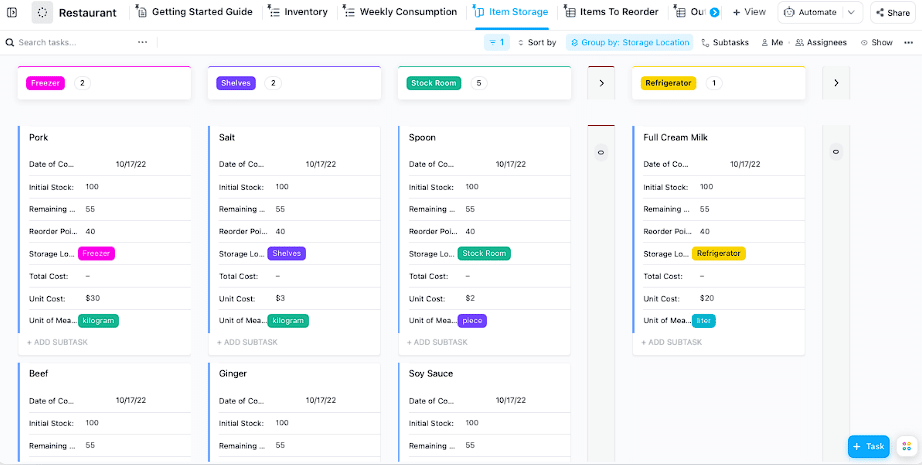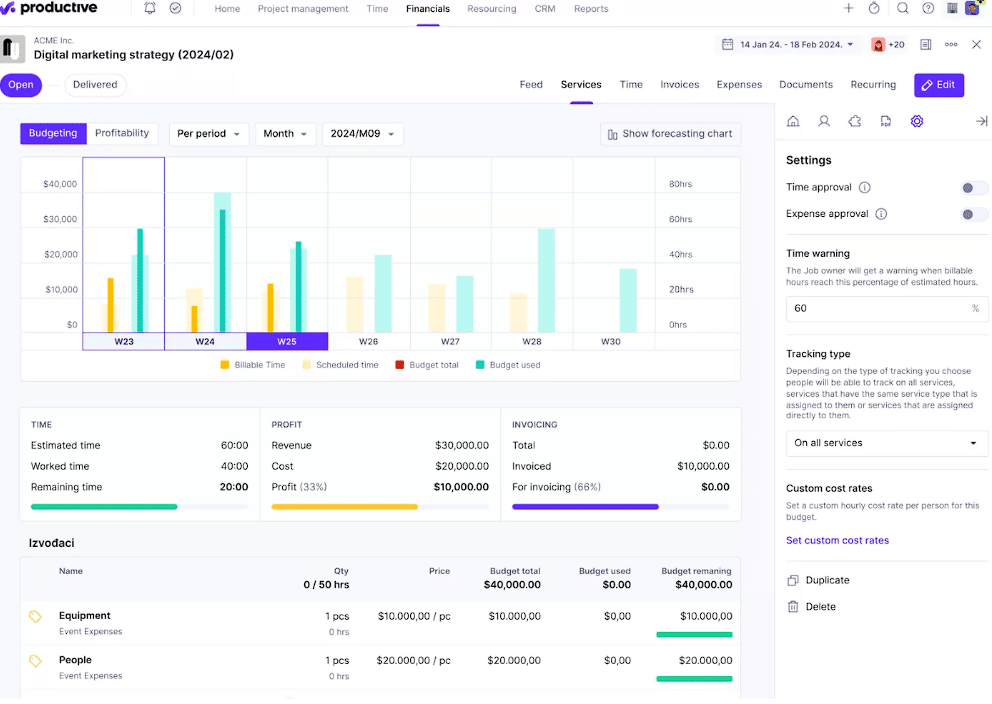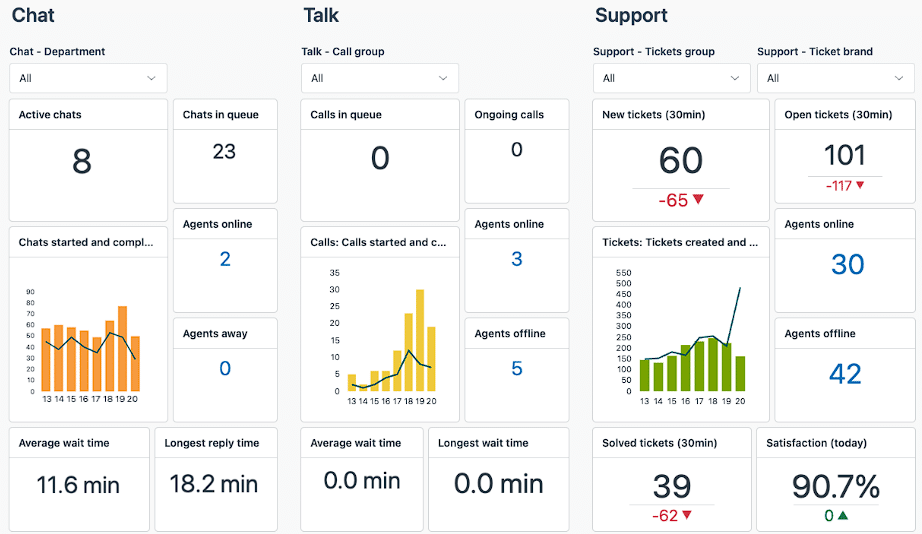Are you currently experiencing forecasting management overwhelm? Or do you often experience troublesome mistakes because you manage forecasting manually? If so, you need forecasting tools now!
A forecasting tool is a software or method used to predict future demand, market trends, and business needs based on historical data and statistical analysis. In a business context, this system helps companies plan inventory, production, purchasing, and marketing strategies more accurately.
By looking at the definition of the forecasting tools, you can already imagine why the use of this system can help manage forecasting. Imagine making more accurate decisions for the future using an app, how exciting is that?
Despite its importance, you must be curious about what a good quality forecasting system is. Therefore, in this article, we will help you by providing 7 recommendations for the best forecasting tools for Philippine businesses. Nang walang karagdagang ado, pumasok na tayo ngayon din!
Table of Contents
Key Takeaways
|
What is Forecasting Tools?
Before we dive in, we should first discuss forecasting tools. Forecasting tools are software or an analysis method used to predict future business needs, demands, and trends. These systems process historical data, market trends, and other external variables to produce accurate forecasts.
The advantage of a forecasting tool lies in its ability to reduce risk and improve operational efficiency. With accurate predictions, companies can avoid shortages or overstocks, optimize supply chains, and allocate resources more precisely.
These systems typically use various methods, including trend analysis, statistical modeling, and machine learning, to provide a comprehensive picture of future business conditions.
Types of Forecasting
Forecasting has several types that can be used according to the needs and type of data available. The following is a complete explanation of the types of forecasting:
1. Qualitative forecasting
This method relies on the judgment and opinions of experts or individuals who have experience and knowledge of a particular market or industry. It is best used when historical data is limited or unavailable, such as for new products or unstable markets.
2. Quantitative forecasting
This method uses historical data and statistics to make predictions. Suitable for situations where past data is available and has patterns that can be analyzed. This method is divided into two main categories, namely time series forecasting and casual forecasting.
3. Time series analysis
This method focuses on analyzing data organized in a time sequence to identify patterns, trends, seasonality, or cycles in the data. This type of forecasting is generally used for data that has a specific period, such as monthly, annual, or seasonal sales.
4. Causal models
This method relies on the assumption that there is a cause-and-effect relationship between different variables. Causal models are more suitable for data that shows a direct relationship with a particular factor. For example, product sales may be affected by price, advertising, economic conditions, and other factors.
5. Machine learning and AI forecasting
With the development of technology, machine learning and artificial intelligence (AI) are increasingly being used in forecasting. AI demand forecasting enables businesses to analyze vast amounts of data and identify complex patterns that may be difficult to detect using conventional methods.
By leveraging AI-driven insights, companies can make more accurate predictions, optimize inventory management, and improve overall operational efficiency.
The Benefits of Using Business Forecasting Tools
We have already discussed some of the details of forecasting tools. But what exactly are the benefits of using such a system? Using a forecasting system provides many benefits for companies, especially in improving operational efficiency and decision-making. By utilizing historical data and trend analysis, forecasting systems can help companies predict market demand.
In addition, forecasting systems also allow companies to conduct better financial planning. By knowing the projected future revenue and operating costs, companies can set budgets, allocate resources, and set the right business strategies. It also helps in cash flow planning, so that companies can ensure the availability of funds for investment.
Another advantage is the ability to be responsive to market changes and consumer trends. A sophisticated forecasting system can analyze data in real-time and quickly recognize patterns or changes in consumer behavior. Thus, companies can adjust their marketing, pricing, and production strategies according to current market conditions.
7 Best Forecasting Apps for Your Business
Here are the 7 best forecasting tools recommendations to help your business in the Philippines get better:
1. HashMicro forecasting software

The forecasting system from HashMicro is specifically designed to be able to meet the various needs of companies to manage forecasting as a reference basis for determining a more accurate and precise sales strategy in the future according to historical data owned by the company.
HashMicro’s forecasting system is also equipped with intelligent analytics that provide deep insights into sales performance, market trends, and customer behavior. These insights enable companies to design more effective sales strategies and target customers more precisely.
Here are some features of the HashMicro sales forecasting software:
- Sales Forecast & Actualization: Comparing sales forecasts with actual sales figures to identify patterns, evaluate performance, and adjust their business strategies.
- Customer Segment (RFM) Analysis: Helps companies identify their most valuable customer segments and design customized marketing strategies for each segment.
- Smooth Integration: Easily integrates with other modules, such as CRM, inventory management, and accounting. It enables smooth and accurate data flow across departments to help companies get a comprehensive view of business conditions, including inventory status, customer orders as a basis for forecasting.
| Pros | Cons |
| User-friendly interface | Less suitable for businesses with a medium to low scale |
| No additional charges in the middle of the implementation process | |
| Responsive user service | |
| Extensive customization options |
2. ClickUp forecasting tool

ClickUp’s forecasting feature offers a robust solution for businesses to oversee and predict aspects like sales, demand, and financial outcomes. By utilizing its tools, companies can establish clear goals, analyze past data, create various projections, monitor time spent on tasks, and optimize resource management.
This capability empowers users to anticipate market demands, distribute resources wisely, and base strategic decisions on data, ultimately driving business success.
Here are the features offered by ClickUp’s sales forecasting software:
- Manage interactions
- Variety of template options
- Deep analytical power
| Pros | Cons |
| Provide free plan options | Less optimized to run on mobile |
| Non-steep learning curve |
3. Productive forecasting tool

Productive forecasting tools are software solutions designed to not only predict future business outcomes but also provide functionalities like profit tracking and advanced reporting. These tools go beyond basic forecasting by offering in-depth insights into sales performance, demand fluctuations, and financial health.
A key advantage of these tools is their ability to track profit by analyzing expenditures, revenues, and various financial metrics. They can monitor cash flow, assess budget allocations, and identify potential profit margins across different projects or products.
Here are the features offered by Productive sales forecasting software:
- Time off management
- Project management
- Sales CRM
| Pros | Cons |
| In-depth reporting capabilities | Time-consuming implementation process |
| Can be easily integrated with other systems | Limited customization options |
4. Zendesk sales forecasting software

Zendesk forecasting software is part of the Zendesk CRM suite that helps businesses predict and monitor their sales performance with a focus on user-friendly interface and real-time monitoring. It simplifies the sales forecasting process, allowing sales teams to import internal sales data for accurate predictions, manage leads, and control their sales pipeline more effectively.
Here are the features offered by Zendesk:
- Real-time monitoring and reporting
- Smooth integration
| Pros | Cons |
| Does not take long to implement | Less suitable for medium to low-scale businesses |
| Responsive user service | Highly dependent on the internet network |
5. Anaplan forecasting tool
Anaplan is a cloud-based forecasting software designed to provide advanced forecasting and robust reporting capabilities. It offers a powerful platform for businesses to create precise forecasts by leveraging large volumes of data, sophisticated modeling, and scenario planning.
Here are the features of Anaplan:
- Advanced analytics
- Statistical forecasting
- PlanIQ
| Pros | Cons |
| Advanced forecasting and analysis | Steep learning curve |
| Extensive budgeting and planning features | Implementation duration that can take a long time |
6. SAP analytics cloud
SAP Analytics Cloud (SAC) is a cloud-based software that integrates business intelligence (BI), planning, and predictive analytics into a single platform. It provides businesses with real-time data analysis, visualization, and interactive dashboards to make data-driven decisions.
With its BI capabilities, users can explore data, identify trends, and generate detailed reports, enabling strategic insights across various business functions like finance, sales, and operations.
Here are the features of SAP analytics cloud:
- Predictive forecasting
- Extended scenario planning
| Pros | Cons |
| Integrated business intelligence features | Steep learning curve |
| Free demo available | Less intuitive interface |
7. Hubspot forecasting software
HubSpot forecasting software is a tool within the HubSpot CRM platform that allows businesses to project future revenue and manage sales pipelines effectively. It provides detailed performance analysis, consolidating sales estimates from different representatives into a unified report.
A key advantage of HubSpot’s forecasting software is its mobile accessibility, which allows users to access and update forecasts from any device and location. This feature is particularly useful for sales teams who are often on the move.
Here we present some of the features offered by HubSpot:
- Tracking every progress
- Mobile access
| Pros | Cons |
| Optimally run on mobile | Less extensive scalability |
| Has extensive customization options | Relatively high price |
What Should You Look for in Forecasting Tools?
We have presented some recommendations on the best quality forecasting systems along with their respective advantages and disadvantages. However, you may still feel unsure of how to choose a system that suits your needs.
Therefore, we present a few things that you need to consider and look at when choosing a forecasting system:
- Suitability to Business Needs: Make sure the software has features that suit the specific needs of your business. For example, if your business is retail-focused, software that can predict seasonal demand and sales trends will be very beneficial.
- Integration Capabilities: Choose a software that can integrate with other systems you already use, such as ERP, inventory management, or CRM system. Good integration will ensure a smooth flow of data, making the predictions more accurate and relevant.
- Forecasting Methods and Algorithms: Check the methods and algorithms used by the software. A good software should offer a variety of forecasting methods, such as trend analysis, statistical models, to machine learning, to produce predictions that are more precise and customizable to business characteristics.
- Ease of Use: Choose a software that is user-friendly and easy for your team to understand. An intuitive interface will make it easier for users to operate and analyze forecasting results without requiring complicated training.
- Technical Support and Updates: Make sure the software vendor offers responsive technical support and regular updates. Good support will help resolve technical issues quickly and ensure the software is always up-to-date with the latest features and technologies.
Conclusion
Forecasting software is an application specifically designed to assist companies in forecasting the purchase or purchasing power of customers in the future by relying on some historical data of buying behavior that has been recorded in the archive and owned by the company.
Seeing the benefits provided, you need to choose a capable forecasting system, one of which is HashMicro. HashMicro has the best forecasting system in the Philippines that not only helps forecasting become better but can also be integrated with other systems, such as procurement, inventory, and Accounting platforms used locally.
Don’t waste any more of your time and schedule a free demo of the HashMicro system to experience the powerful benefits of this system!























